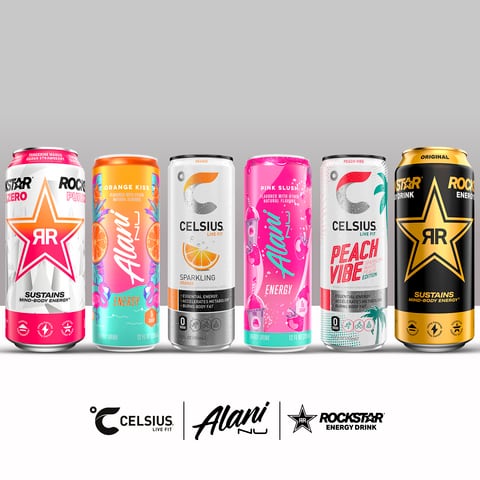From billion-dollar acquisitions to evolving snacking demand and a Fortune 500 split, this week’s moves highlight where CPG brands and retailers will need to stay agile to capture growth
Celsius buys Rockstar, deepens ties with PepsiCo
Celsius Holdings announced it is acquiring PepsiCo’s US and Canadian rights to Rockstar Energy Drink, in a deal that also increases PepsiCo’s ownership stake in Celsius to roughly 11%.
The move not only expands Celsius’ footprint in the competitive energy drink market, but also cements PepsiCo as a long-term partner through distribution and strategic collaboration. For Celsius, which has been steadily gaining share with its fitness-focused positioning, taking control of Rockstar gives it additional leverage against rivals like Monster and Red Bull.
Read full story here: Celsius buys Rockstar Energy Drink from PepsiCo
Five snack trends reshaping the industry
Conagra’s latest Future of Snacking report highlights five key shifts influencing how Americans eat between meals. Consumers are gravitating toward bold, adventurous flavors and globally inspired tastes, reflecting a desire for more excitement in everyday snacks.
Health and wellness remain strong drivers, with better-for-you formulations gaining ground.
Nostalgia is also a major factor, as brands leverage co-branded tie-ins with iconic products.
Finally, demand for portability and convenience is fueling growth in bite-sized and on-the-go formats. Together, these trends point to a rapidly evolving snacking landscape that is more diverse and personalized to meet consumers’ nuanced preferences and values.
Read full story here: Conagra reports 5 snack trends reshaping the industry
Kraft Heinz to split into two companies
In a dramatic restructuring, Kraft Heinz announced it will split into two publicly traded companies, effectively undoing much of its 2015 merger.
One entity will focus on its global sauces and spreads business, estimated at $15 billion in annual revenue, while the other will manage its $10 billion North American grocery portfolio. Company leaders say the breakup is designed to simplify operations, reduce complexity and unlock shareholder value.
The separation, expected to be completed by late 2026, underscores the challenges Kraft Heinz has faced in balancing growth with efficiency across its diverse brand portfolio.
Read full story here: Kraft Heinz split confirmed



